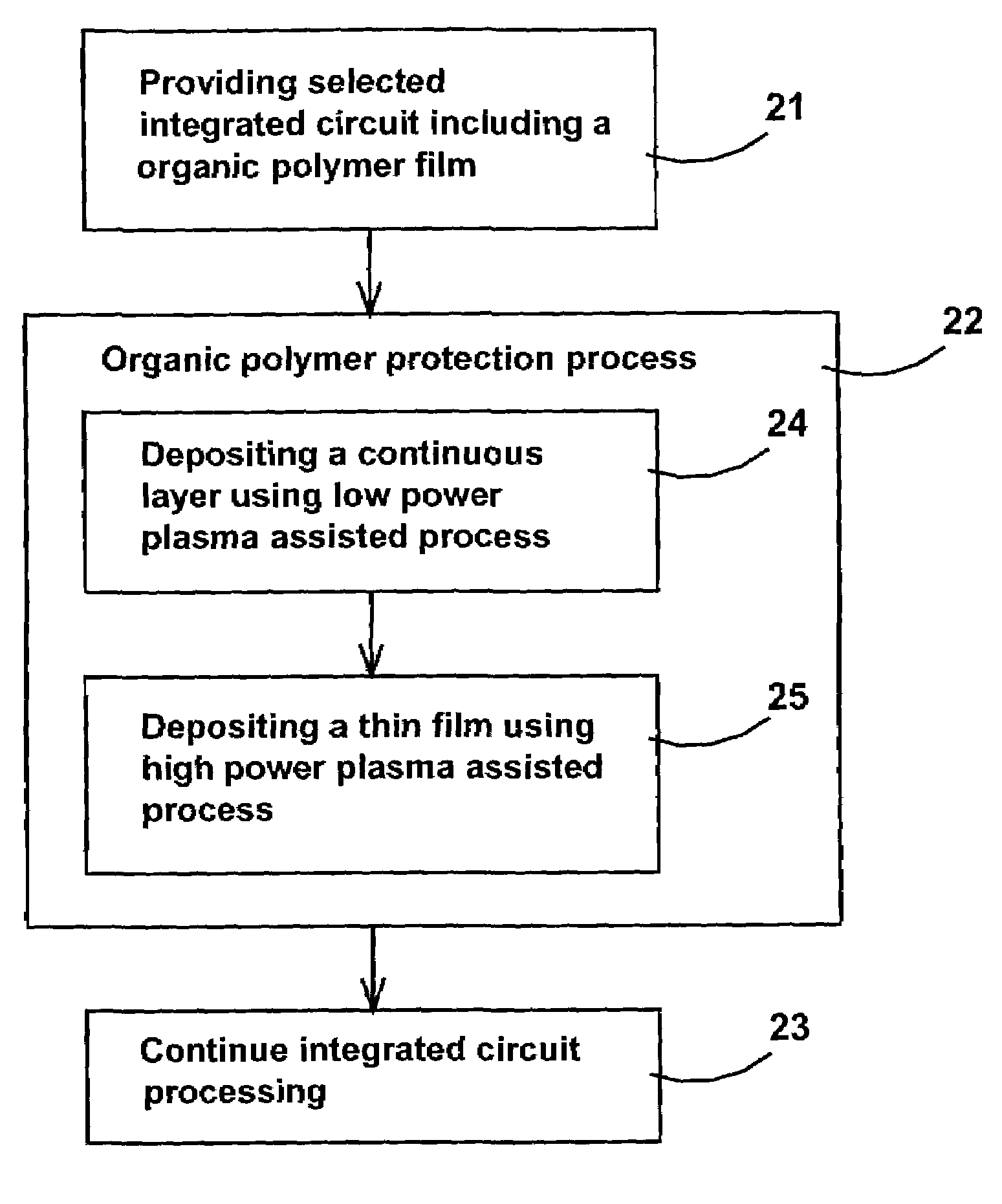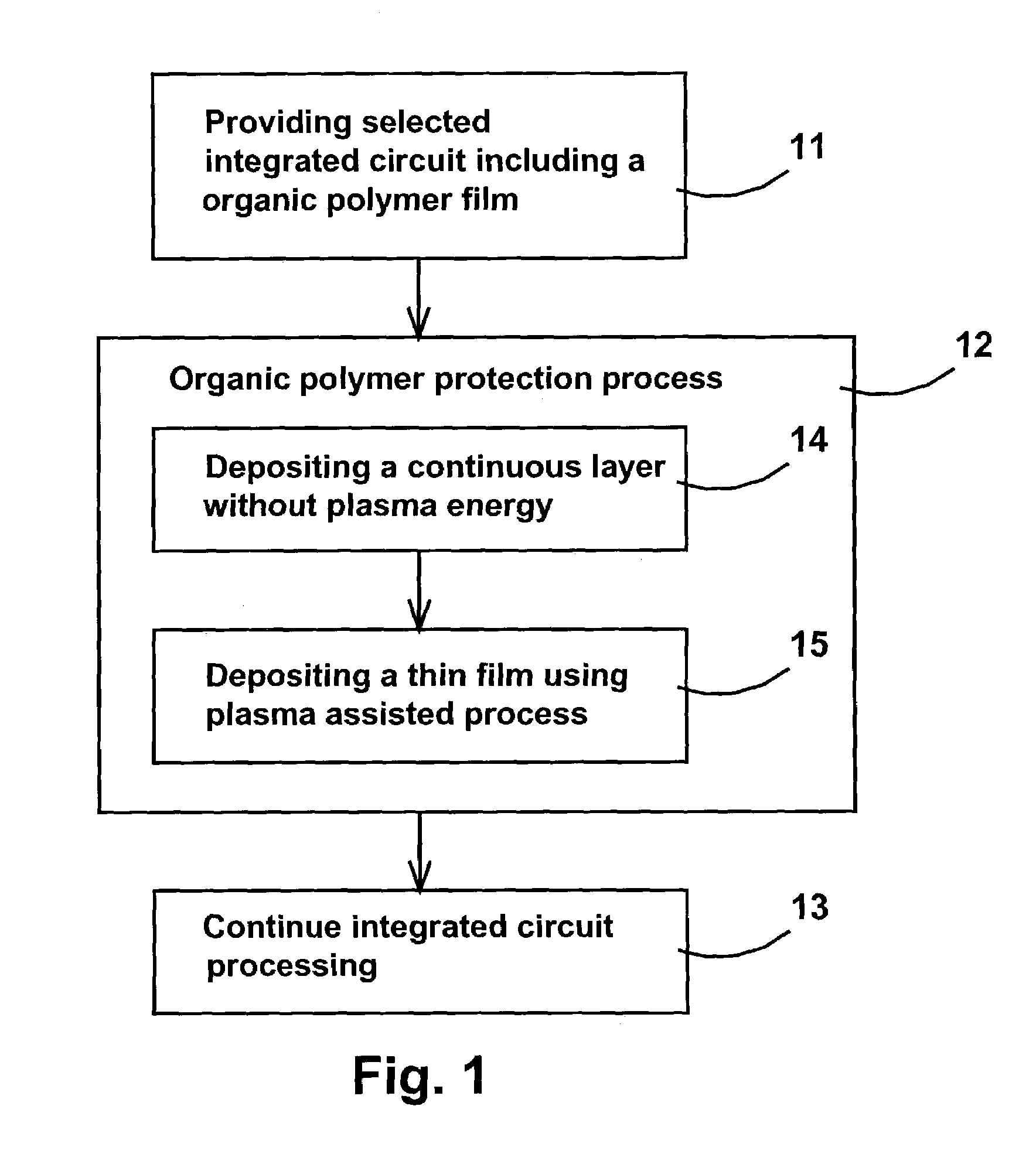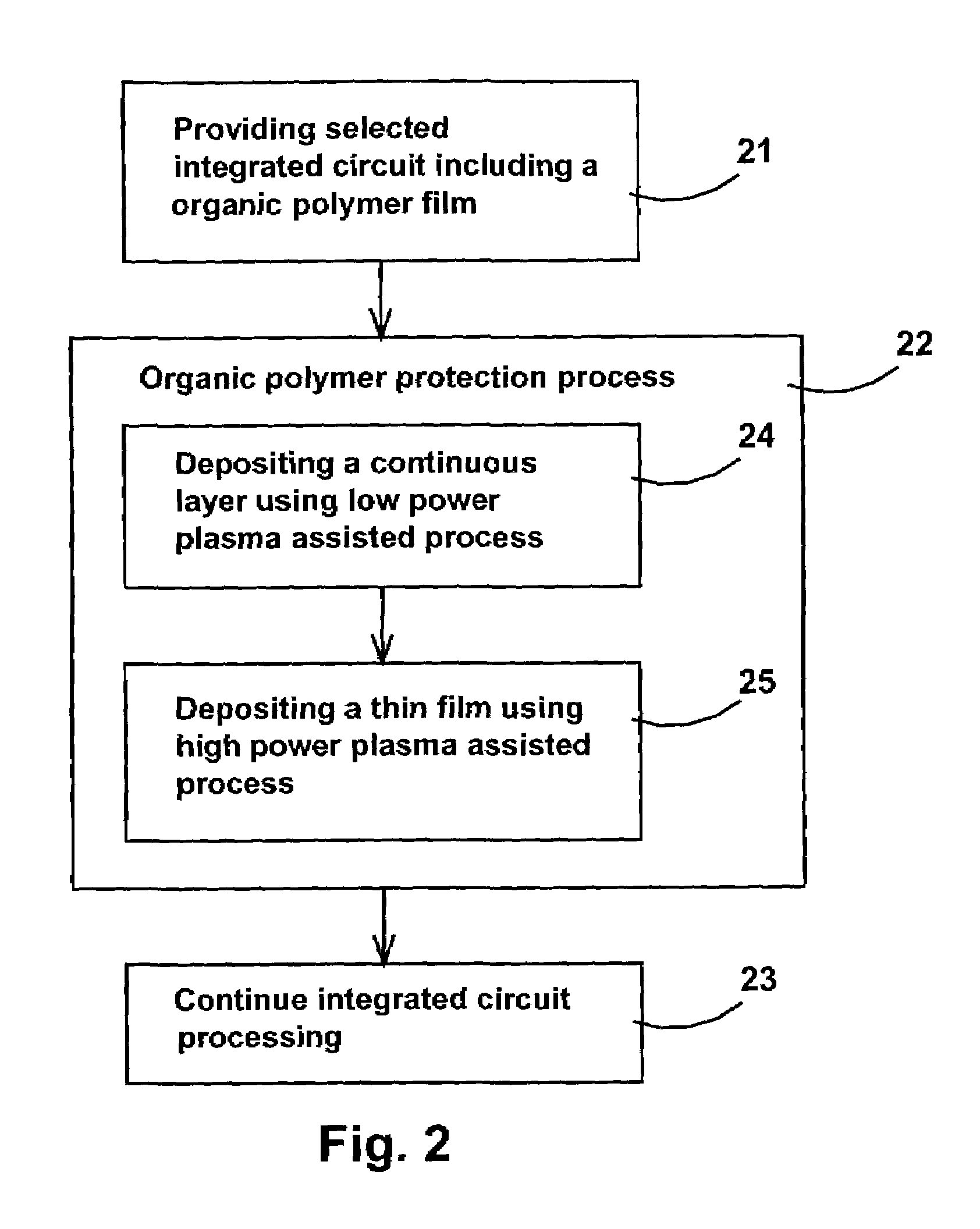Method to plasma deposit on organic polymer dielectric film
- Summary
- Abstract
- Description
- Claims
- Application Information
AI Technical Summary
Benefits of technology
Problems solved by technology
Method used
Image
Examples
first embodiment
[0044]FIG. 1 is a flowchart showing the steps in the method to protect the organic polymer dielectric underlayer. Step 11 provides the selected integrated circuit including an organic polymer dielectric film. Step 12 shows the current invention organic polymer protection process comprising 2 steps: step 14 and step 15. Step 14 provides the deposition of a continuous film using non plasma process in order to not damage the organic polymer dielectric film and to protect the organic polymer dielectric film during the plasma exposure of the next step. Then step 15 provides the plasma assisted deposition of a thin film on top of the continuous film. Step 13 provides the rest of the integrated circuit processing such as interconnect and passivation. To not exposing the organic polymer dielectric film to an ambient containing energetic plasma excited species, step 14 provides a protection layer. The deposition step 14 and the deposition step 15 can be processed in the same process chamber,...
second embodiment
[0045]FIG. 2 is a flowchart showing the steps in the method to protect the organic polymer dielectric underlayer. Step 21 provides the selected integrated circuit. Step 22 shows the current invention organic polymer protection process comprising 2 steps: step 24, 26 and step 25. Step 24 provides the deposition of a continuous film using low power plasma process in order to not damage the organic polymer dielectric film and to protect the organic polymer dielectric film during the plasma exposure of the next step. Then step 25 provides a high power plasma assisted deposition of a thin film on top of the continuous film. Step 23 provides the rest of the integrated circuit processing such as interconnect and passivation. Typically, the deposition of the continuous film and the deposition of the impermeable film are occurred in the same process chamber if the materials in these 2 films are similar, such as TiN with different levels of plasma energies. The depositions can occur in 2 sepa...
PUM
| Property | Measurement | Unit |
|---|---|---|
| Plasma power | aaaaa | aaaaa |
| Plasma power | aaaaa | aaaaa |
| Plasma power | aaaaa | aaaaa |
Abstract
Description
Claims
Application Information
 Login to View More
Login to View More - R&D
- Intellectual Property
- Life Sciences
- Materials
- Tech Scout
- Unparalleled Data Quality
- Higher Quality Content
- 60% Fewer Hallucinations
Browse by: Latest US Patents, China's latest patents, Technical Efficacy Thesaurus, Application Domain, Technology Topic, Popular Technical Reports.
© 2025 PatSnap. All rights reserved.Legal|Privacy policy|Modern Slavery Act Transparency Statement|Sitemap|About US| Contact US: help@patsnap.com



